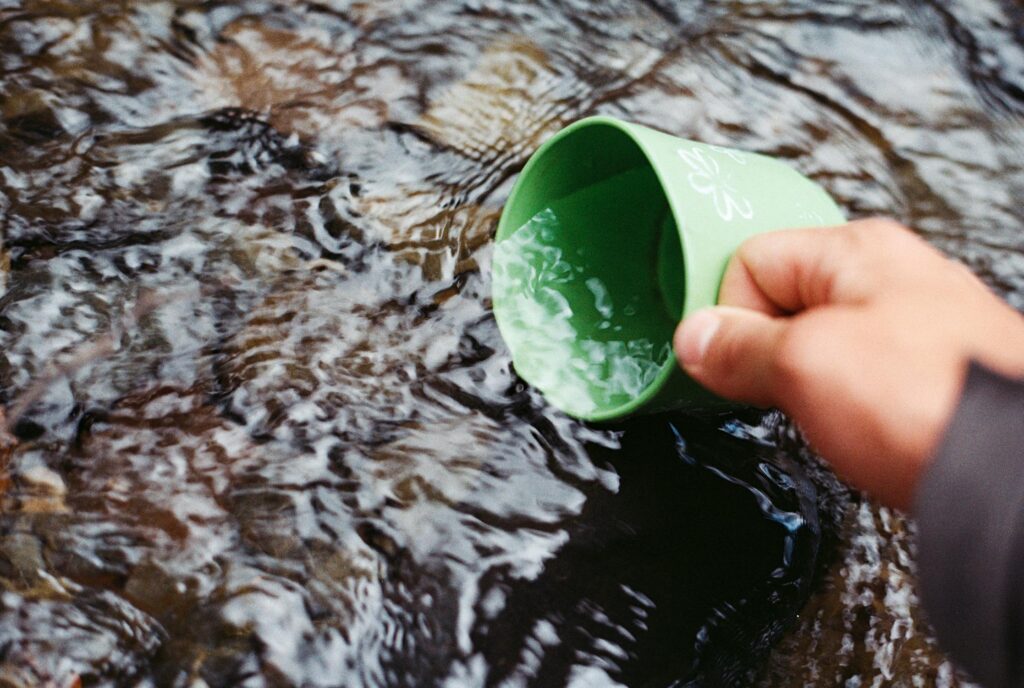Globally, water contamination is a significant concern, and the chemicals employed in modern technology pose substantial health hazards. One of the primary culprits is PFAS, or per- and poly-fluoroalkyl substances. These synthetic chemical compounds are “forever chemicals” due to their extreme persistence in the environment and our bodies for many years.
ATSDR tests detected PFAS in the bloodstreams of 98% of the US population. Commonplace items like food packaging, clothes that withstand water, firefighting foams, and even non-stick cookware contain these chemicals.
The contamination from PFAS is widespread in the US, with 45% of tap water containing these chemicals, according to CNBC. Cleaning up this contamination is a huge task, with the EPA estimating a $1.5 billion annual cost for stricter regulations.
Cancer and Public Outrage Against PFAS Exposure
Aqueous Film-Forming Foam (AFFF), a type of firefighting foam, is one of the most concerning sources of PFAS pollution. Firefighters have extensively used this foam to put out gasoline fires, particularly at airports and military locations.
Regrettably, AFFF has significant concentrations of PFAS, which have been connected to severe health issues, including cancer. The NCI found that PFAS exposure from AFFF increases the risk of developing malignancies such as kidney and testicular cancer.
Those who work as firefighters and live close to polluted areas are more at risk. Numerous lawsuits against the AFFF makers and others accountable for PFAS pollution have resulted from this. According to these claims, AFFF manufacturers knew for years that PFAS posed health dangers to people. Yet no action was taken to safeguard the public or consumers.
Many people with firefighter foam cancer are suing for lost wages and medical expenses. They are also seeking reimbursement for damages from PFAS-related illnesses and cancer diagnoses. Although some of these lawsuits have already yielded sizable settlements, the court fight is still ongoing.
A Natural Solution to the PFAS Problem
The contamination problem caused by PFAS is challenging because these chemicals persist for a long time. Researchers at MIT may have found a promising solution by developing a natural filtration material made from silk and cellulose. According to their findings, this nature-based filter can remove many contaminants, including PFAS and heavy metals, from water.
This silk and cellulose material was initially created for a completely different purpose. Previously, the aim was to help label seeds and prevent counterfeiting. However, the researchers realized that the material’s structure could be helpful in water filtration. Early attempts using silk alone didn’t work. Yet, the filtration became highly effective when they added cellulose (a material sourced from wood pulp waste).
How Does This Filter Work?
MIT News explains that the new filtration material combines silk proteins with cellulose nanocrystals. When mixed, the silk molecules naturally align along the cellulose crystals, creating a strong, thin membrane. The cellulose component is vital because it gives the material an electrical charge. Further, it allows the component to attract and capture contaminants like PFAS.
Another benefit is the filter’s antimicrobial properties. Many filtration systems fail because they become clogged by bacteria and fungi over time. However, the material used in the recommended filter resists that type of buildup. It performed much better in lab tests than traditional materials like activated carbon, often used for water filtration.
The Road to Scaling Up the Solution
The use of PFAS-containing firefighting foams is now being scrutinized more closely. In some places, it is being restricted or banned. TorHoerman Law reports that the Pentagon has recently been driving changes in the use of firefighting foam. They announced that new foam products will be introduced for military service members starting next year.
Current federal regulations limit the acceptable amount of PFAS in drinking water to 7 ppt. The advancements made by the MIT research team offer hope for better water filtration in the future. While the lab tests are promising, scaling up this technology for widespread use is challenging.
Currently, the material is anticipated to be utilized in small-scale filters, such as those attached to kitchen faucets. As technology advances, larger municipal water systems may be able to receive filtration from it.
The team at MIT, including postdoc Yilin Zhang and Professor Benedetto Marelli, continues to refine the material. They aim to enhance its durability and ensure a sustainable source of raw materials.
The silk proteins used in the filtration material are currently sourced as a byproduct of the silk textile industry. Besides, alternatives may need to be considered to meet global demand. The good news is that both silk and cellulose are food-grade materials, making them safe options for water filtration.
FAQs
Why is the military transitioning away from AFFF foam?
The military is abandoning AFFF foam due to its PFAS content, which poses significant health risks and damages the environment. The National Defense Authorization Act for Fiscal Year 2020 mandates the DoD to discontinue AFFF use by October 1, 2024. Waivers may extend the deadline to 2026 for certain uses.
What makes PFAS challenging to remove from water?
PFAS are exceptionally stable and resistant to degradation, making them persistent in water sources. Short-chain PFAS, are hard to filter out because they are smaller and less likely to adsorb onto conventional filtration materials. Moreover, PFAS contamination is typically found in very low concentrations, yet even trace amounts can be harmful.
Will MIT’s filtration material be accessible for residential use?
MIT’s filtration material will initially be utilized in small-scale filters for residential faucets. Following thorough testing to ensure safety and efficacy, it could eventually be scaled up for municipal water systems. Mass production is still in development. If successful, this innovation could be an affordable and eco-friendly solution for residential water purification.
The pressing issue of water contamination by PFAS demands attention, yet hope glimmers on the horizon. Despite ongoing challenges, persistent research is critical to unlocking cleaner and safer water. Simultaneously, as lawsuits proliferate and regulations intensify, it is evident that tackling PFAS contamination requires innovative solutions and unwavering accountability.







